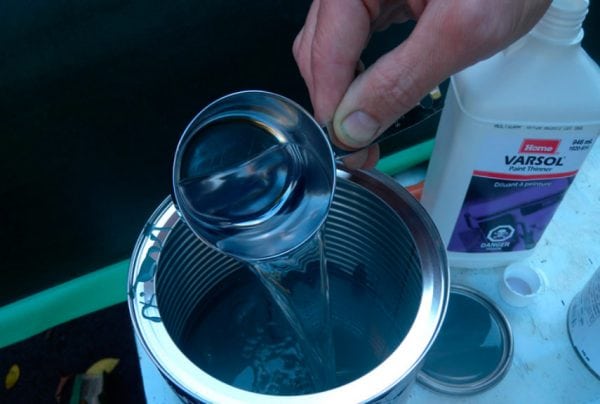The most popular on the market are acrylic paints, which are widely used in various fields of construction. However, for people first using such a composition, the first thing that arises is the question of how to dilute acrylic paint?
The abundance of advantages, in comparison with other materials, made them the most popular. In the manufacture of synthetic substances that give high performance. The material is an acrylic acid based composition.
to contents ↑Features
Acrylic paints include three elements:
- hue pigment;
- a binder (most often a resin);
- water.
This composition ensures the environmental friendliness of the material. During the work, the paint does not emit toxic fumes and odors. The presence of water makes the paint non-flammable. These qualities ensure the safe use of the material in office and residential premises.
If necessary, obtain the desired shade can be bred with a coloring pigment. The presence of water allows the material to dry quickly. In case of drying, the material can easily be returned to its original state by dilution with water.
to contents ↑Obtaining the necessary density
All acrylics are sold as a thick mixture that almost always needs to be diluted. This is done not only for the convenience of work, but also to obtain a flat surface after drying.
For dilution, you can use:
- Water based solution. Since water is one of the elements of this material, its addition may well help to dilute the composition. However, dried acrylic paint cannot be washed off, therefore, immediately after work, it is necessary to clean the tools. Otherwise, their further use will be impossible.
- Special equipment. There are many special fluids designed to obtain the desired consistency. They are recommended for use by manufacturers.
- Solvents. Acrylic paints, like enamels and other materials, can be mixed with ordinary solvents, however, they can affect the final properties. Unlike water-based paints, some solvents can give a glossy finish; others, on the contrary, can make it matte.
- In other colors. Acrylic based formulations are mixed together for new colors and shades.
If you choose how to dilute the material, it is better to focus on the necessary performance indicators.
to contents ↑How to breed
Unlike enamels, acrylic paints are much easier to prepare. However, if you use them, you must follow the rules to get the required density.
First, decide on the subject of painting and determine on what basis the solution will be prepared.
If it is the walls of the building or ceilings, it is enough to use water as a solvent.For furniture and other wooden structures, it is better to use special equipment with a certain property.
They can be found in hardware stores. If you use a material for coating metal surfaces, you should use ordinary solvents.
In the case of using water, it is extremely important to use only clean and cold water. Acrylic compounds are more whimsical than enamels. You can do several experiments with small proportions to obtain the desired consistency. Most often, the proportions are 1/1, 1/2 or 1/5. Each ratio has certain properties:
- 1/1 ratio is used for the initial layers, since the paint is less greasy and does not accumulate on the brush lumps;
- 1/2 is used for secondary stains, in which the brush is well saturated, and thin even layers are obtained;
- 1/5 allows you to penetrate into small pores and get a transparent layer, perfect for structures with a textured surface.
If you want to make a gradient of tones, it is worth making a ratio of 1/15. This is almost pure water, in which a light color shade is added. Applying several layers of this composition will allow you to achieve a transition from dull to saturated color. To achieve such a result on the basis of the solvent does not work, because the liquid will corrode a small amount of paint in the composition.
to contents ↑What to do with dried paint
Unlike enamels, acrylic paints can be used even after drying. When the composition stands for a long time after opening the lid, it inevitably undergoes drying. This is characteristic not only for enamels, but also for other materials based on synthetic substances. However, acrylic paints can be diluted. True, their properties will differ from the previous ones.
Since the composition is based on water, its addition will return the characteristic features. First you need to carefully crush the dried piece and put in a container withstanding boiling water temperature. Then boiling water is poured into the vessel. The procedure is repeated as the fluid cools. When all the particles absorb enough liquid, the process will be over.








